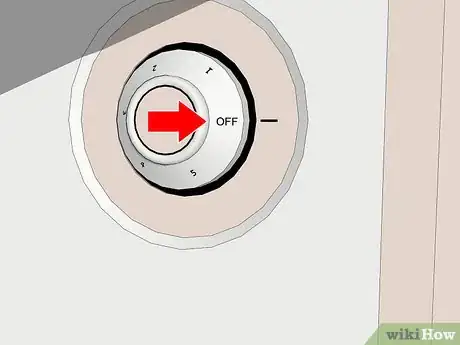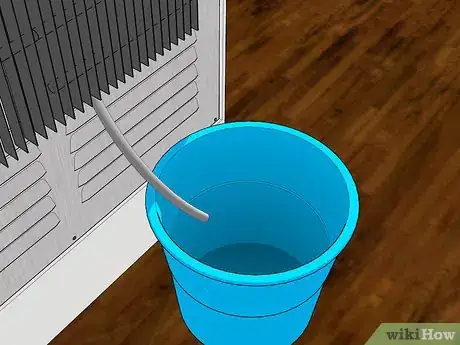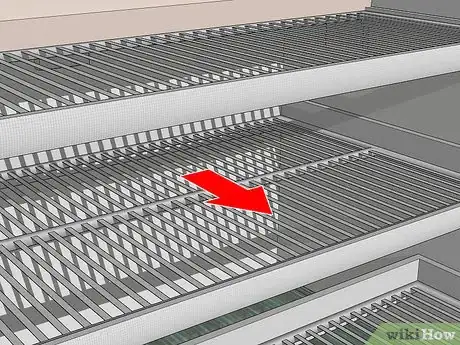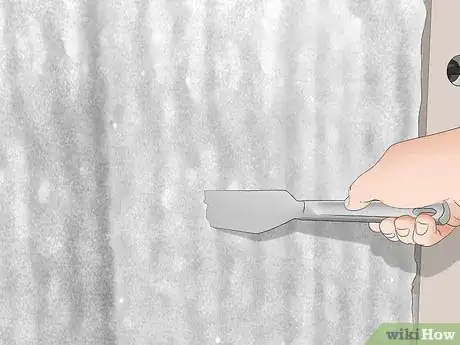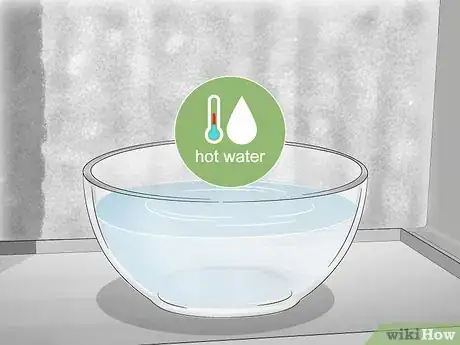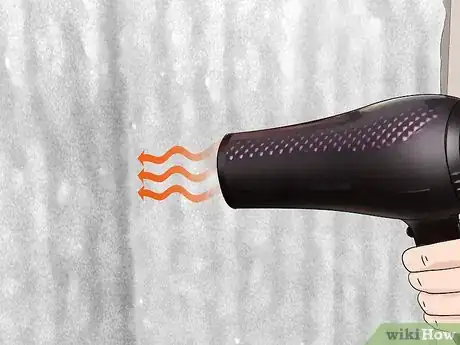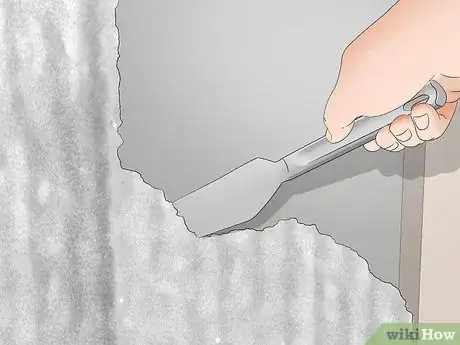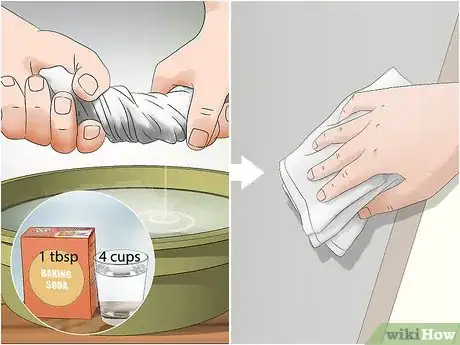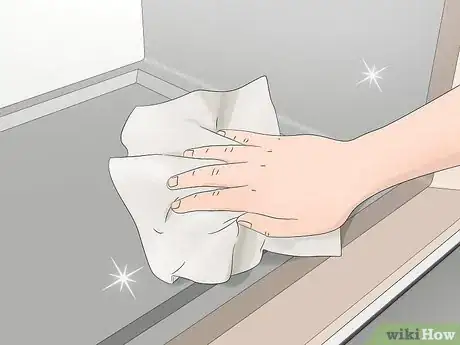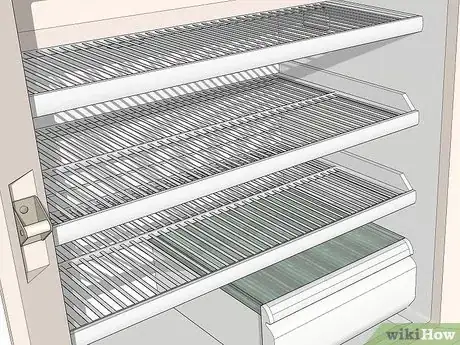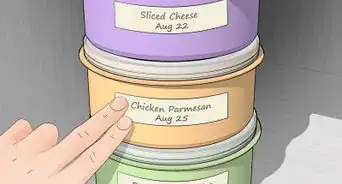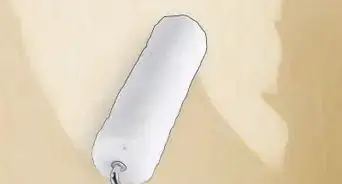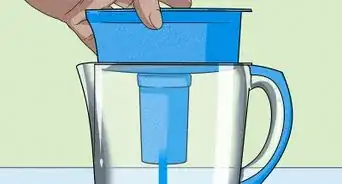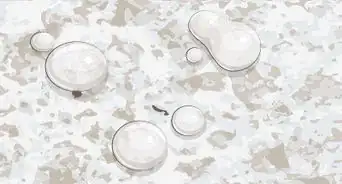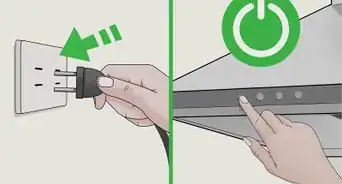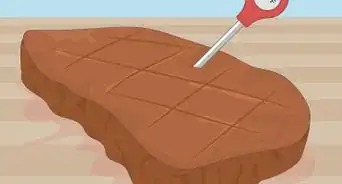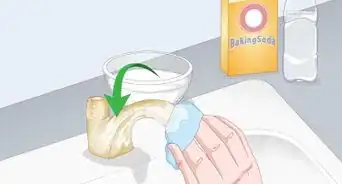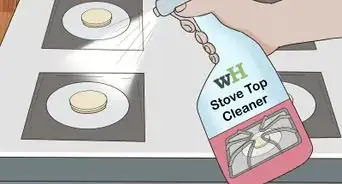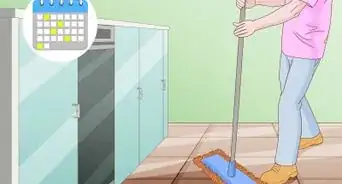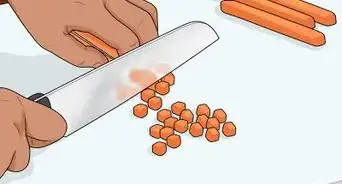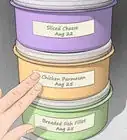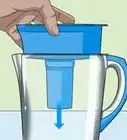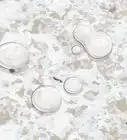This article was co-authored by Gevorg Grigorian. Gevorg Grigorian is an Appliance Repair Specialist and the Owner of G and R Appliance Repair in Los Angeles, California. With over 12 years of experience, Gevorg specializes in residential and commercial appliance repairs as well as heating, ventilation, and air conditioning (HVAC) services. Gevorg holds a BS in Business Administration and Management from California State University-Northridge.
There are 8 references cited in this article, which can be found at the bottom of the page.
wikiHow marks an article as reader-approved once it receives enough positive feedback. This article received 30 testimonials and 90% of readers who voted found it helpful, earning it our reader-approved status.
This article has been viewed 1,720,151 times.
Over time, a thick layer of ice can build up on the inside of your freezer if you have one without an automatic defrosting system. Frost in your freezer reduces the efficiency of the appliance, adds to your electricity bill, and makes it tricky to get things in and out. Defrosting is fairly simple, but it will take you an hour or two to do it. Read on for an easy guide to defrosting your freezer.
Steps
Preparing the Freezer for Defrosting
-
1Move the food in the freezer to a cool location. If you can, ask a neighbor if you can move some food to their freezer for a little while. Your next best option is to stick it in a cooler surrounded by ice or frozen cooling packs.[1]
- If all else fails, wrap it up with cooling packs in a blanket and set it in a cool part of your home.
-
2Turn the freezer off and/or unplug it. It's a good idea to unplug it completely if you can, as you don't want to be standing in water while working around the appliance. If it's a freezer/refrigerator combination, the refrigerator food should be fine for 1-2 hours as long as you leave the door closed.[2]
- Some freezers have a switch you can use to turn off the freezer instead of unplugging it.
Advertisement -
3Place old towels and baking trays around the bottom of the freezer. There's going to be lots of water as you defrost your freezer, so it's best to just be prepared. Put several layers of towels on the floor, gathered around the base of the freezer. Put baking trays on top of the towels but under the edge of the freezer to catch extra water.[3]
-
4Find the drainage hose if yours has one and place the end in a bucket. Some freezers have a drainage hose on the bottom of the freezer that will help carry the water away. If yours has one, put the end in a low basin or bucket so the water can drain out into it.[4]
- You also might want to place shims under the front feet of the freezer to help encourage the water to flow toward the drain.
Removing the Frost Layer
-
1Take out the shelves and leave the door or lid to the freezer open. The warm air is your first tool to defrost the ice layer. Prop the door or lid open if you need to, as some freezers have doors that automatically close. Now is also a good time to take out shelves, drawers, and any other removable parts if your freezer has them.
- If some shelves won't come out, leave them in until the ice melts some more.
- If you just let the freezer sit open without doing anything else, it will likely take 2-3 hours to defrost completely, depending on how thick the ice is.
-
2Scrape the worst of the ice out with a spatula to thin out the ice layer. If you have layers and layers of ice, it will melt faster if you scrape some of it out. Use the edge of a spatula to scrape the ice into a basin or bucket so it can melt away from the freezer.
- You can also use an ice scraper, but be careful as you could damage the lining of your freezer.
-
3Add a bowl of hot water to the freezer to easily speed up the process. Place the bowl in the bottom of the freezer. You can even add several bowls of water if you have room. Use boiling water if you can, but be careful not to burn yourself as you move the bowls.[5]
- The steam will help melt the ice. Change out the bowls as they get cold, every 5 minutes or so.
-
4Use a blow dryer to melt the ice faster. Set the dryer on the hottest setting and hold it about 6 inches (15 cm) away from the ice. Blow it towards the ice layer in the freezer. This will speed up the process considerably but make sure to keep the cord and blow dryer well away from the water for safety's sake. Also, move the blow dryer over the ice constantly so you don't make any one area too hot.[6]
- Some vacuum cleaners will also do this. You have to attach the hose to the exhaust, and it will blow out hot air. Use the hot air from the hose to melt the ice.
- You could also try a steamer used for cleaning or taking wrinkles out of clothes. Set the steamer on high and move it over the ice.
-
5Continue to scrape out the ice as it melts. The pieces of ice will start to slide down the walls as it melts. Use the spatula to pull them out into a bucket or basin so the freezer can melt faster.
- Also, mop up any water from the ice with a dry towel.
Returning the Freezer to Working Order
-
1Wash any shelves and drawers in a sink full of soapy water once they warm up. Fill the sink with warm water and a couple of drops of dishwashing liquid. Once these parts come to room temperature, drop them in the water to soak.
- After they've soaked for a few minutes, scrub them down with a dishcloth in the warm, soapy water. Rinse them thoroughly with clean water and shake off any excess water you can.
- You should wait for them to come to room temperature because glass shelves could crack if you move them from a freezing environment to a warm one too quickly.
-
2Wipe the inside of the freezer down with baking soda and water once the ice is gone. Add 1 tablespoon (18 g) of baking soda to 4 cups (0.95 L) of water. Dip a rag in the water and wring it out. Use the rag to wipe down the interior of the freezer, including the walls, the door/lid, and the bottom of the freezer.[7]
- The baking soda will help clean and deodorize the freezer.
-
3Dry the removable parts and the inside of the freezer with a towel. Get up as much excess moisture in the freezer as you can with a fresh, dry towel. Wipe down the shelves and drawers, too, using a new towel as needed.
- Let the freezer air dry for 10-15 minutes. Leave the door open and walk away for a little while. When you come back, the freezer and shelves should be completely moisture-free.
- Any moisture left in the freezer will just turn back into frost.
-
4Put everything back in the freezer and turn it back on. Slide the shelves and drawers back into place if you have them. Turn the freezer back on or plug it back in if you need to. Place any food you saved on the shelves and in the drawers.
- Throw out any food that you think might have thawed and reached an unsafe temperature, particularly foods like fish.
Expert Q&A
Did you know you can get expert answers for this article?
Unlock expert answers by supporting wikiHow
-
QuestionHow often should I defrost my freezer chest?
 Gevorg GrigorianGevorg Grigorian is an Appliance Repair Specialist and the Owner of G and R Appliance Repair in Los Angeles, California. With over 12 years of experience, Gevorg specializes in residential and commercial appliance repairs as well as heating, ventilation, and air conditioning (HVAC) services. Gevorg holds a BS in Business Administration and Management from California State University-Northridge.
Gevorg GrigorianGevorg Grigorian is an Appliance Repair Specialist and the Owner of G and R Appliance Repair in Los Angeles, California. With over 12 years of experience, Gevorg specializes in residential and commercial appliance repairs as well as heating, ventilation, and air conditioning (HVAC) services. Gevorg holds a BS in Business Administration and Management from California State University-Northridge.
Appliance Repair Expert
Warnings
- When using a hairdryer, keep the plug and hairdryer well away from any water.⧼thumbs_response⧽
Things You'll Need
- Old towels
- Baking sheet
- Basins or buckets
- Hot water
- Dishcloths
- Dishwashing soap
- Baking soda
- Spatula, optional
- Hair dryer or vacuum cleaner, optional
- Cooler, optional
References
- ↑ https://www.bobvila.com/articles/how-to-defrost-a-freezer/
- ↑ https://www.cleanipedia.com/gb/kitchen-cleaning/how-to-defrost-a-freezer-quickly.html
- ↑ https://www.goodhousekeeping.com/uk/house-and-home/household-advice/a672323/the-best-way-to-defrost-your-freezer/
- ↑ https://www.searspartsdirect.com/article/how-to-defrost-a-kenmore-freezer.html
- ↑ https://learn.compactappliance.com/defrosting-freezer/
- ↑ https://www.quickanddirtytips.com/house-home/housekeeping/appliances/how-to-defrost-a-freezer
- ↑ https://learn.compactappliance.com/chest-freezer-cleaning-tips/
- ↑ Gevorg Grigorian. Appliance Repair Expert. Expert Interview. 30 July 2020.
About This Article
To defrost a freezer, start by moving all of the food in it to a separate freezer or cooler. Then, unplug or turn off the freezer, and spread some towels around the base of it to catch leaking water. Next, scrape out as much of the ice as possible with a spatula to speed up the melting process. You can also place a bowl of hot water in the freezer or use a hairdryer to help the ice melt faster. Finally, once all of the ice is melted, dry off the inside of the freezer and turn it back on. For tips on how to clean the inside of your freezer after defrosting it, scroll down!

